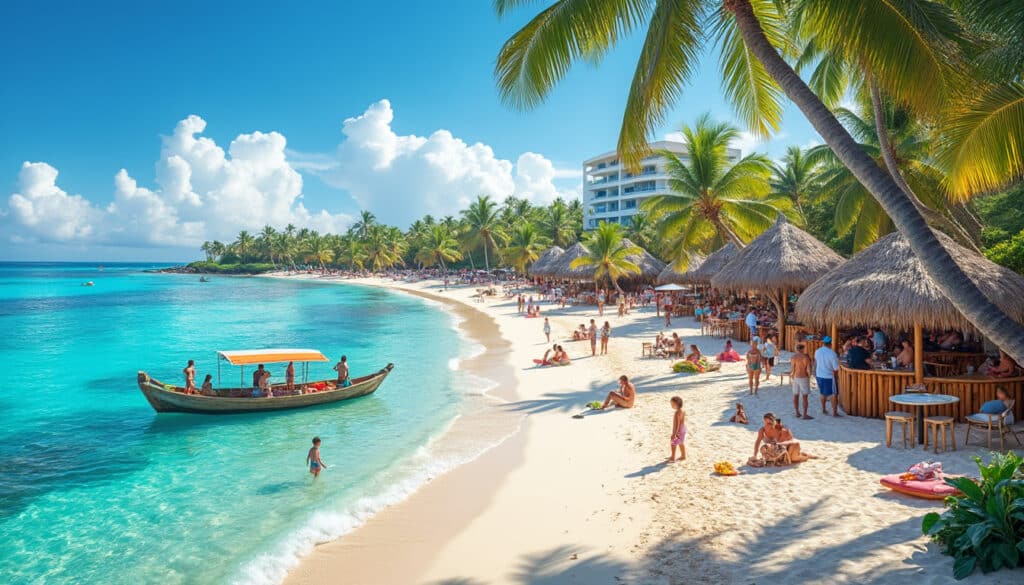Surrounded by azure waters and sunlit beaches, Punta Cana stands as a cornerstone of cultural exchange and tourism in the Caribbean. The linguistic tapestry of this paradise is as vibrant and varied as its natural beauty. With Spanish reigning as the official tongue, the region showcases a unique dialect that sprinkles local interactions with color and history. Yet, this doesn’t mean other languages are absent; on the contrary, English, Haitian Creole, and even Samaná English shape the communication landscape for both tourists and locals. Whether navigating Punta Cana Tours or lounging at a Punta Cana Beach Club, understanding the nuances of language here is not merely a travel tip—it’s a gateway to deeper cultural interaction.
Spanish: The Official Language of Punta Cana
Punta Cana’s primary language, Spanish, infuses the daily life of its people and enriches the travel experiences of visitors. Understanding and speaking Spanish can significantly enhance interactions, whether you’re exploring Punta Cana Resorts or engaging in vibrant local markets. Over 85% of the Dominican population fluently communicates in Spanish, making it essential for both commercial and cultural exchanges.
The distinct flavor of Dominican Spanish differentiates it from the Spanish spoken in Spain or other Latin American countries. Known for its rapid pace and unique pronunciation, Dominican Spanish often omits certain sounds, adding a local twist. For instance, phrases like “gracias” (thank you) may become “gracia,” and “perro” (dog) might be pronounced as “pello.” This language evolution has roots in a blend of Taino, African, and earlier Spanish influences that have persisted over centuries.

Mastering a few local words can make your experiences more immersive. Words such as “guagua” for bus or “jeva” for girl are common in everyday chatter. Being familiar with these terms not only aids communication but also serves to impress locals with your cultural awareness.
| Spanish | Dominican Spanish |
|---|---|
| Trabajar | Traba |
| Fiesta | Jumo |
| Autobús | Guagua |
| Estás | Ta |
With the language deeply intertwined in commerce, signs at popular Punta Cana Excursions and Punta Cana Rentals venues are usually in Spanish. Consequently, even basic Spanish phrases help navigate daily life with greater ease, ensuring smoother interactions during your Punta Cana Adventures.
Language Engagement through Everyday Interactions
While Spanish is a gateway to seamless travel, it also enriches connections with local communities during Punta Cana Getaways. Understanding local expressions can unveil deeper insights into cultural customs and hospitality practices, whether you’re dining in a traditional Dominican restaurant or engaging with locals on the beach. As many resort employees are bilingual, appreciation for their native language opens doors to authentic experiences. Ultimately, learning Dominican Spanish isn’t just about communication—it’s about fostering genuine connections.
Haitian Creole: A Minority Language
In the rich cultural mosaic of Punta Cana, Haitian Creole holds a significant yet understated presence. This language reflects the historical and contemporary ties between the Dominican Republic and its neighbor, Haiti. Spoken by approximately 2% of the population, Haitian Creole contributes to the linguistic diversity of the region.
Haitian Creole is primarily spoken in areas populated by people of Haitian descent, particularly those employed in various service sectors within Punta Cana. Despite its minority status, understanding or recognizing Haitian Creole adds depth to visitor interactions, especially when embarking on Punta Cana Tours that explore cultural integrations.
This language, born from a mix of French and African dialects, retains its distinct character yet isn’t officially recognized in the Dominican Republic. This lack of formal acknowledgment influences how the language is perceived and used. However, the rhythm and resilience of Haitian Creole, as expressed by its speakers, remain integral to the cultural soul of Punta Cana.
Understanding simplistic greetings or expressions can bridge gaps during social exchanges, adding a layer of warmth to your interactions. In areas where the locals primarily speak Haitian Creole, simple words like “bonjou” for good morning or “mèsi” for thank you can foster a sense of mutual respect and appreciation.
| English | Haitian Creole |
|---|---|
| Good Morning | Bonjou |
| Thank You | Mèsi |
| Yes | Wi |
| No | Non |
As you explore the linguistic dimensions of Punta Cana, recognizing the value of Haitian Creole underscores a commitment to comprehensive cultural understanding. This awareness not only enriches visits to Punta Cana‘s diverse communities but also enhances appreciation for the region’s historical tapestry.
Samaná English: A Dialect of Heritage
Nestled within Punta Cana’s embrace is Samaná English, a linguistic gem found predominantly in the northeastern region. This dialect is a testament to the cultural footprint left by African American immigrants who settled here in the 19th century, invited as part of the Haitian Emigration movement.
Samaná English, although not widespread, represents the intersection of African-American Vernacular English and local linguistic evolution. Its survival, however, faces challenges due to its limited number of speakers, about 12,000 individuals.
The dialect showcases unique characteristics distinct from standard English, both enriching and challenging for those unfamiliar with its nuances. Like the local flora and fauna around Punta Cana, this language is a badge of resilience and cultural heritage.
For travelers visiting this part of Punta Cana, immersing in even basic elements of Samaná English offers a window into a world less touched by mainstream tourism. Simple expressions and greetings become more than communication tools—they are bridges to understanding cultural resilience and historical permanence.
| Standard English | Samaná English |
|---|---|
| Hello | Hiya |
| See you later | Lata |
The historical depth of Samaná English emphasizes the enduring nature of cultural legacies. When visiting Punta Cana, engaging with this dialect can transform a simple tourist visit into a journey through time.
English in Punta Cana: The Language of Tourism
In Punta Cana, while Spanish dominates, English assumes a pivotal role within the realm of tourism. As one of the most visited destinations, the influx of English-speaking vacationers has led to English being widely understood among those catering to tourists. From Punta Cana Transfers to guided Punta Cana Experiences, English ensures smoother travel experiences.
This prevalence stems from a robust tourism industry, with many service sector employees having learned English primarily to assist visitors. This linguistic convenience is abundant in resorts, shopping centers, and swanky dining establishments, making vacationing in Punta Cana seamless for English-speaking visitors.
While English facilitates travel logistics, including booking Punta Cana Excursions or mingling at a Punta Cana Beach Club, integrating local language skills can further enhance cultural interactions. Understanding and using simple Spanish phrases remain invaluable, adding depth and connection despite English’s broader understanding.
This dual-language environment caters to international travelers while still promoting cultural respect. Learning essential Spanish phrases or even exploring the rich heritage of local dialects benefits those eager to engage with Punta Cana’s wealth of experiences and historical narratives.
- 🗣️ Invest in a basic Spanish phrasebook for enhanced interactions.
- 📚 Join a language exchange during your stay to practice conversational Spanish.
- 🎬 Participate in workshops or tours delivered in Spanish for authentic exposure.
Language and Culture in Punta Cana
The language landscape of Punta Cana is a gateway to the vibrant cultural expressions and historical narratives of the Dominican Republic. Understanding this region’s language dynamics is crucial to appreciating its cultural and social richness. As you explore Punta Cana’s humor, food, or community life, language serves as the cornerstone of cultural exchange.
Learning the region’s languages facilitates not just easier communication but also deeper insights into the local customs and cultural ethos. From the rhythm of the spoken word in a bustling market to the art of dance at community festivals, language embodies the spirit of Punta Cana.
Engaging with local languages promotes cross-cultural understanding and respect. Whether conversing in Spanish, acknowledging the nuances of Haitian Creole, or appreciating the heritage of Samaná English, the effort to speak or understand broadens the scope of a Punta Cana experience.
| Language | Influence |
|---|---|
| Spanish | Primary language, facilitating daily interactions and deeper cultural exchanges. |
| Haitian Creole | Reflects regional history and minority influences within social dynamics. |
| Samaná English | Highlights historical migration patterns and cultural preservation. |
| English | Mainly used in tourist areas, easing communication for visitors. |
Ultimately, understanding and embracing Punta Cana’s language variety enhances tourists’ connections with the area, making their stay not just a visit but a culturally enriched journey.
FAQ
- What predominant language is spoken in Punta Cana? Spanish is the main language spoken in Punta Cana, followed by English in tourism-related areas.
- How can I improve my visit through language? Learning basic Spanish phrases can greatly enhance your travel experience and cultural interactions in Punta Cana.
- Is it necessary to know Haitian Creole or Samaná English? While not necessary, understanding these languages can provide deeper cultural insights, particularly in regions where they are spoken.

Fun Facts & Curiosities About Punta Cana
If you’re seeking a breathtaking escape to paradise, look no further than Punta Cana. Nestled on the eastern coast of the Dominican Republic, this vibrant destination boasts an impressive array of dazzling beaches, rich history, and vibrant culture. Here, visitors…
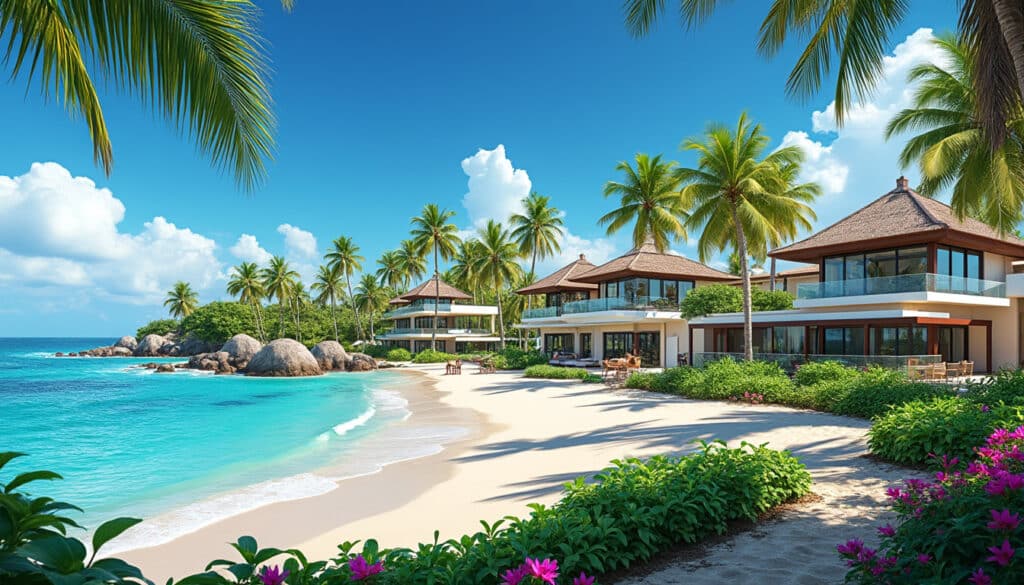
Architecture and urban features of Punta Cana
Punta Cana, a region celebrated for its sun-kissed beaches and clear azure waters, is not merely a paradise for beachgoers—it is a symphony of architectural splendor and urban allure. This Dominican wonderland melds traditional influences with cutting-edge design, offering a…

Living in Punta Cana in 2025 provides a unique blend of paradise vibes and modern lifestyle. From its mesmerizing beaches to a thriving expat community, this Dominican haven offers a lifestyle suitable for those seeking both tranquility and activity. The…
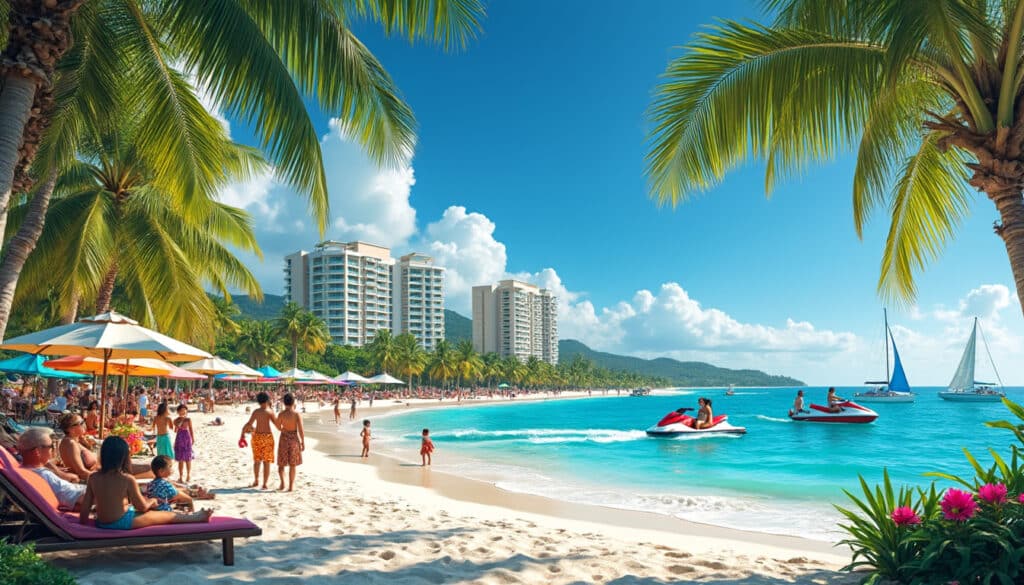
Demographics and geography of Punta Cana
In the heart of the Caribbean, Punta Cana shines as a beacon of sun-kissed beaches and azure oceans. This region, nestled on the eastern edge of the Dominican Republic, serves as a haven for tourists seeking the idyllic tropical escape.…

Holidays and celebrations in Punta Cana
In the heart of the Caribbean lies a tropical paradise rich in culture and bursting with vibrant celebrations. Punta Cana, a dazzling gem on the eastern edge of the Dominican Republic, offers more than just sun, sea, and sand. It…
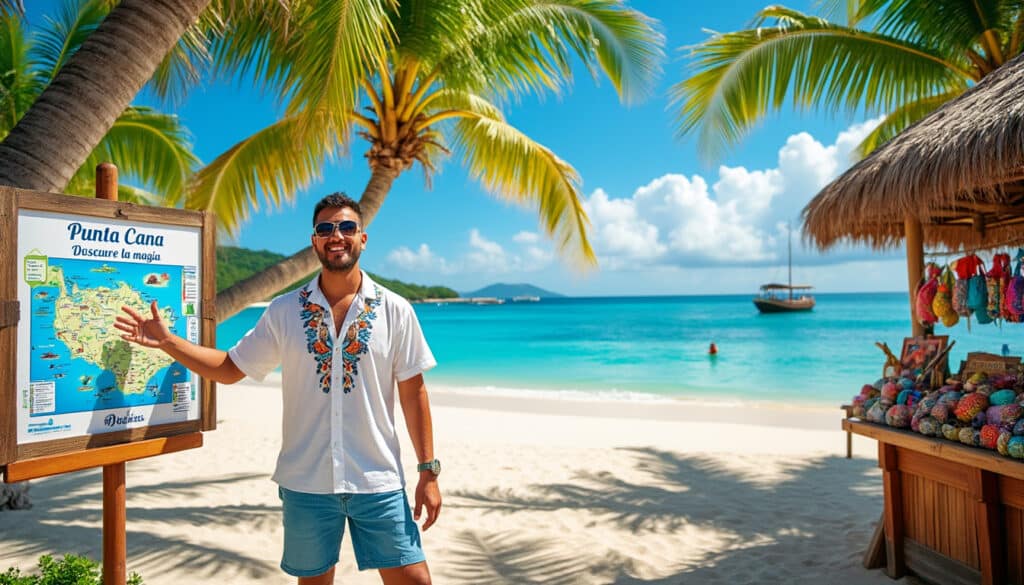
Local tips for tourists in Punta Cana
Visiting Punta Cana promises lush beaches, vibrant culture, and endless exploration opportunities. Yet, maximizing your experience goes beyond merely reaching your destination. To truly immerse in what this Caribbean paradise has to offer, proper preparation, understanding of local etiquettes, and…

Names, flags, and identity of Punta Cana
Unveiling the mesmerizing allure of Punta Cana, this article delves into the intricate layers of its identity, from its evocative name to the vibrant symbols that capture its essence. As the easternmost paradise of the Dominican Republic, Punta Cana resonates…

Reputation and identity of Punta Cana
The splendid strip of heaven known as Punta Cana has etched its identity on the global map through its stunning beaches, vibrant culture, and distinctive charm. Nestled in the Dominican Republic, it stands not just as a tourist destination but…

Time and time zone in Punta Cana
Punta Cana, one of the most alluring travel destinations in the Dominican Republic, is known for its pristine beaches, vibrant culture, and dynamic energy. However, understanding its time zone and how it affects daily life there is crucial for any…

Unusual facts and social issues in Punta Cana
As one of the Caribbean’s premier destinations, Punta Cana is often seen as synonymous with paradise. Its sun-drenched beaches and luxurious resorts promise a getaway of dreams. Yet beneath this tropical veneer lie unusual facts and social issues that many…
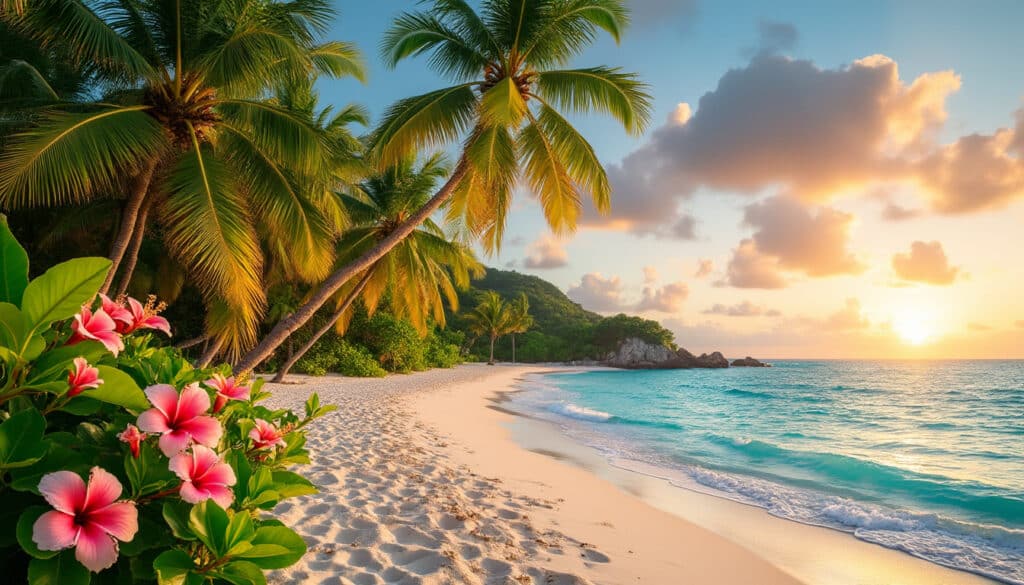
What does Punta Cana look, smell, feel like?
Immerse yourself in the sensory tapestry of Punta Cana, where every moment is a vivid experience. This popular Caribbean destination promises not only relaxing beaches and luxury resorts but also a vibrant atmosphere that tantalizes the senses. From the lush…



